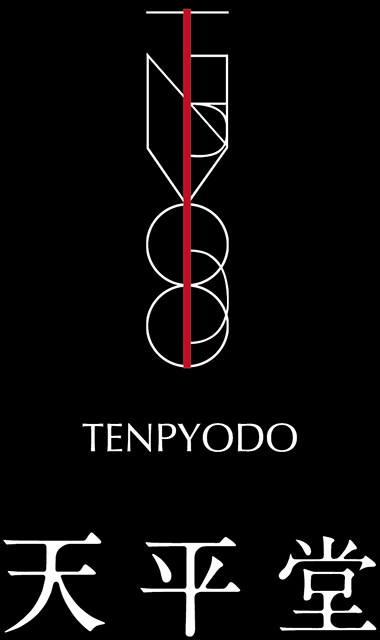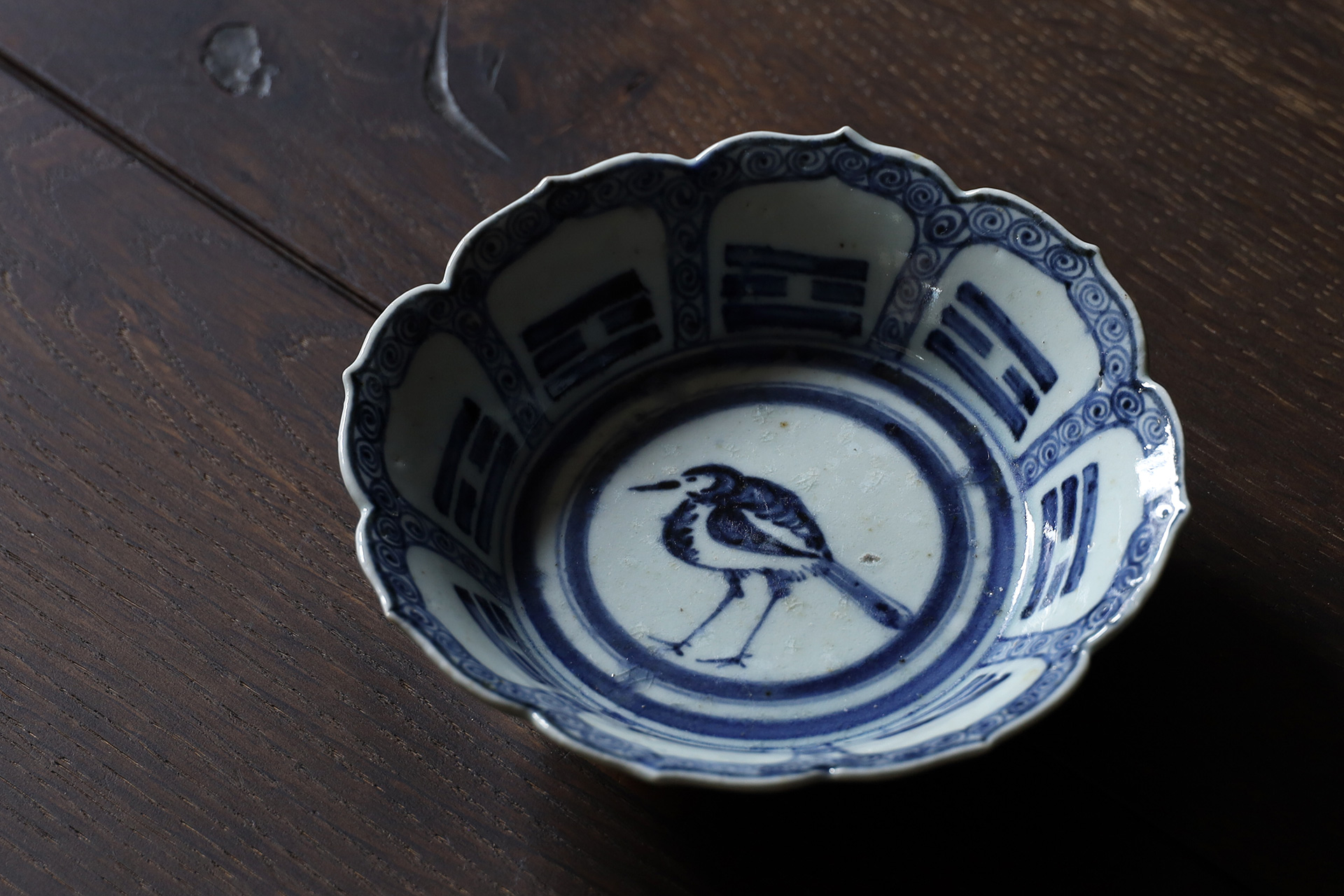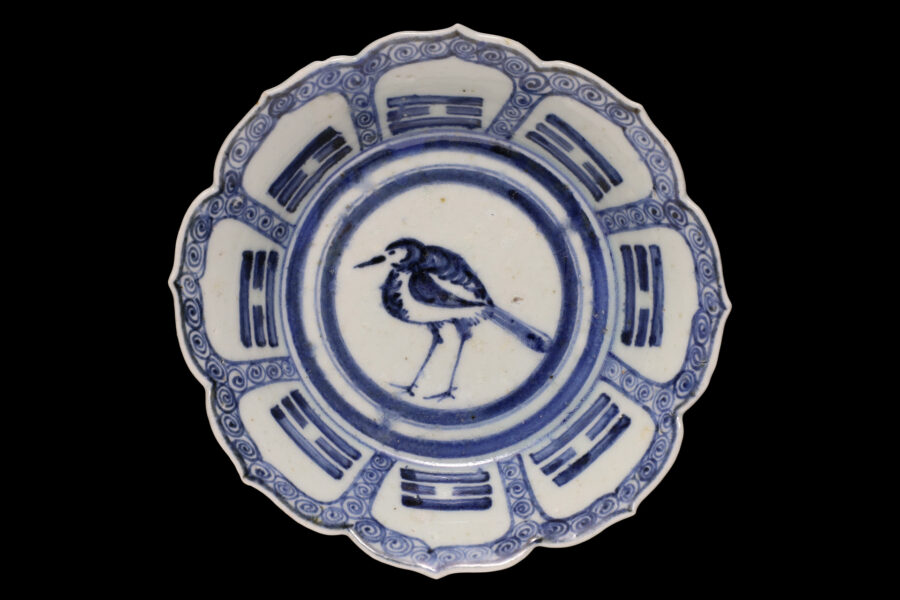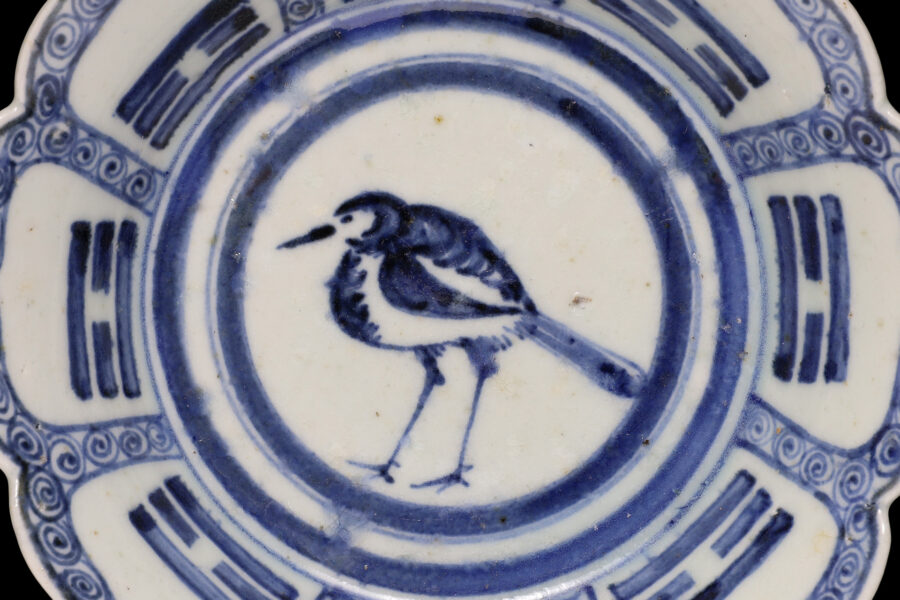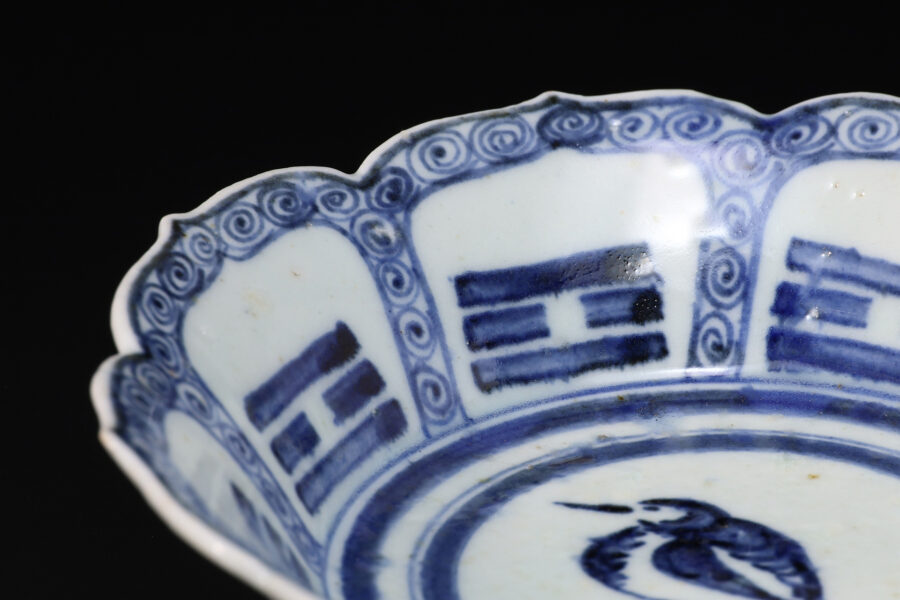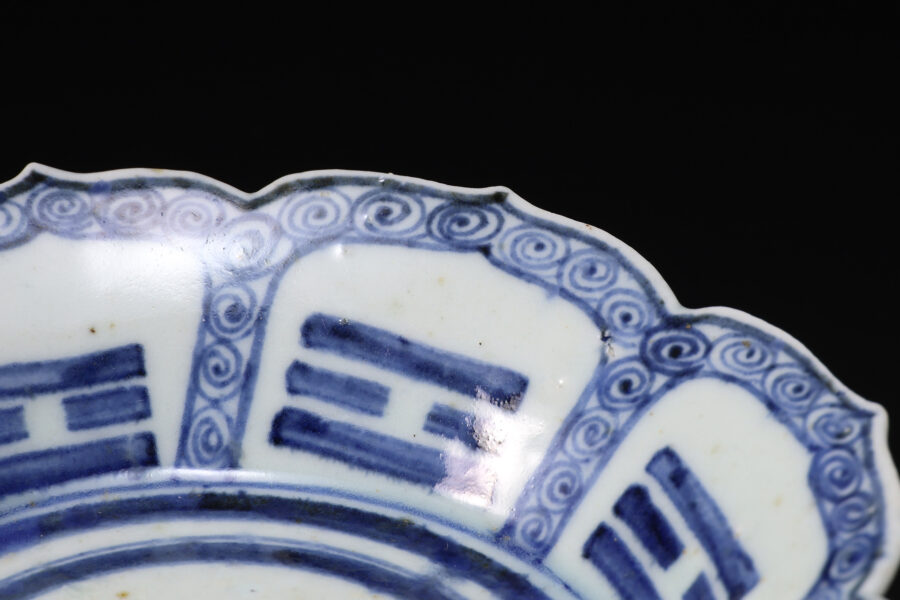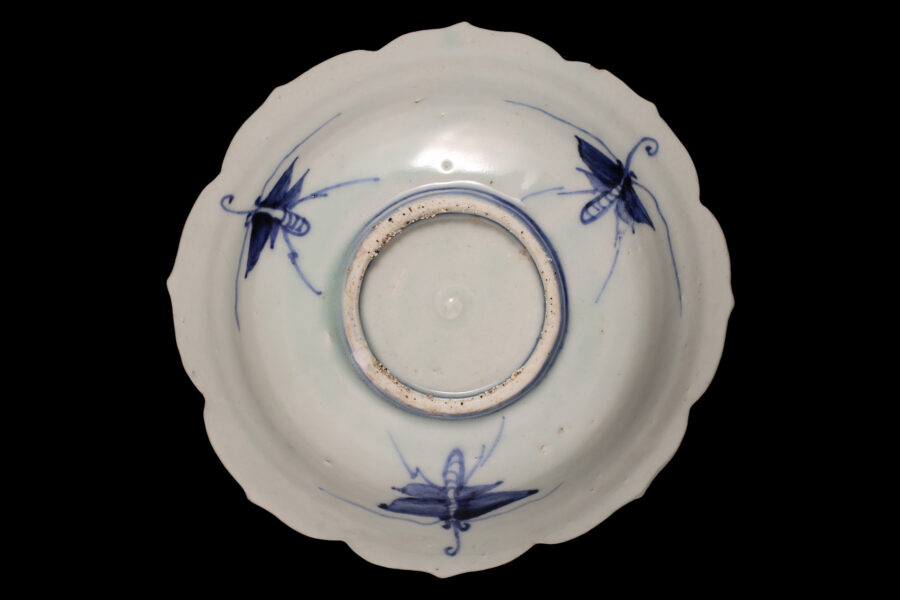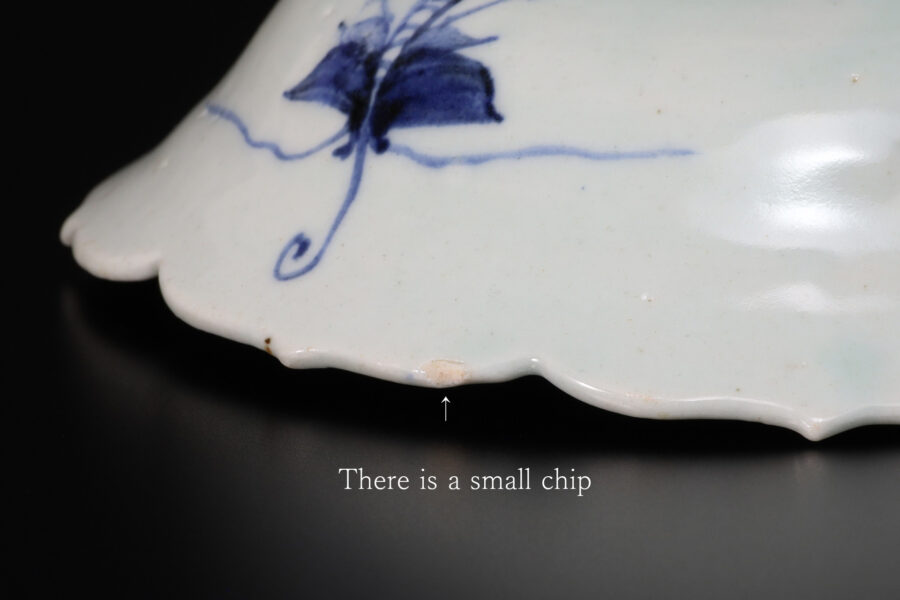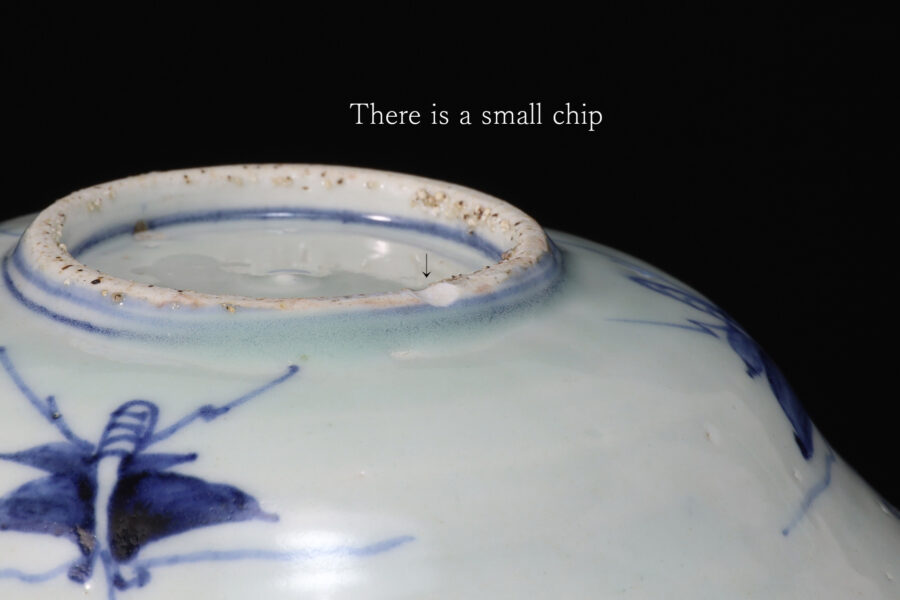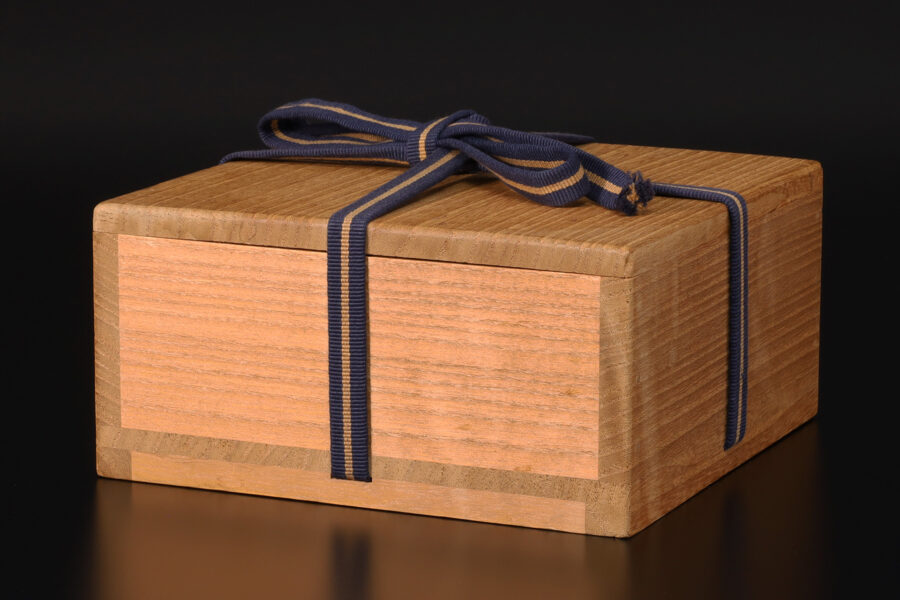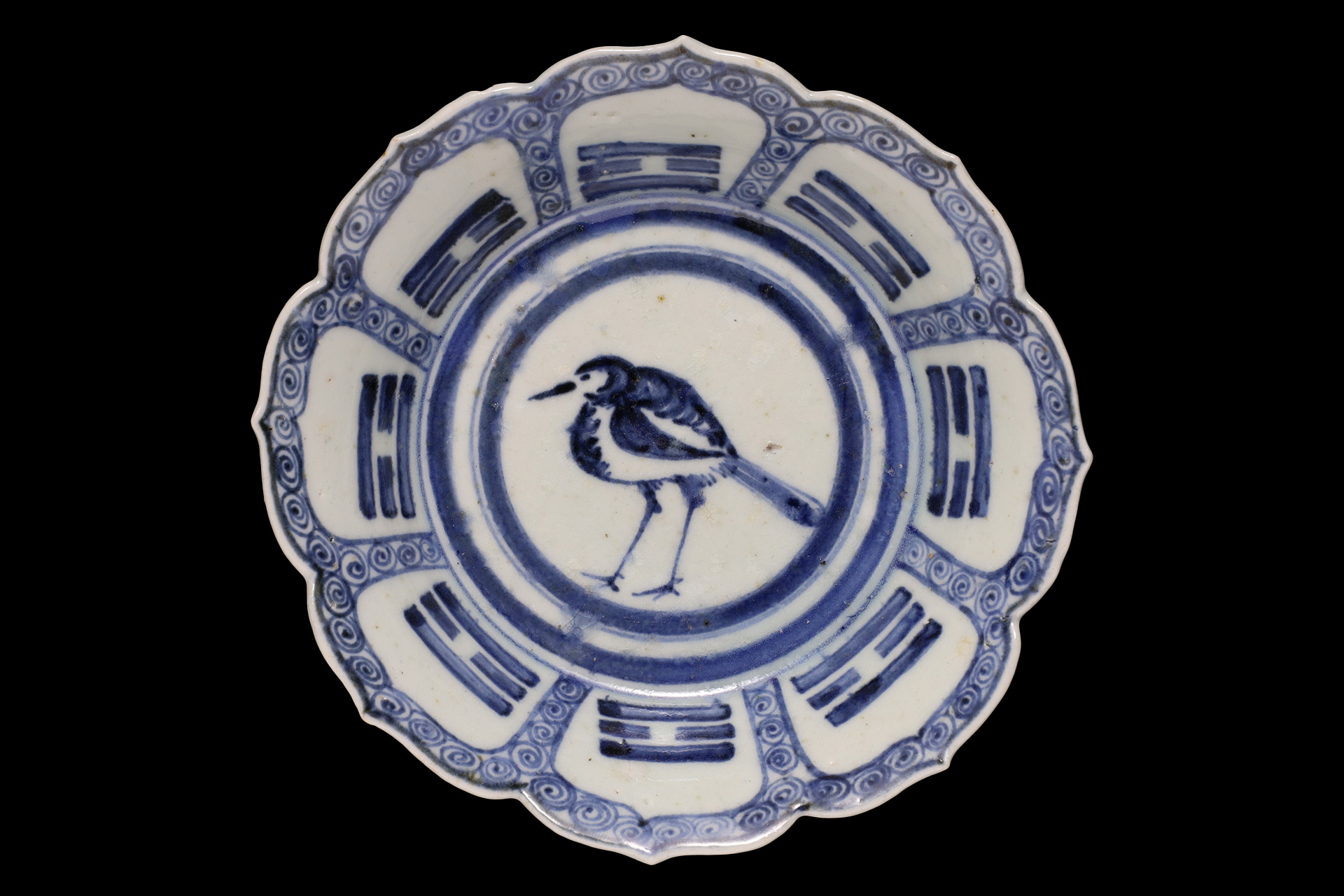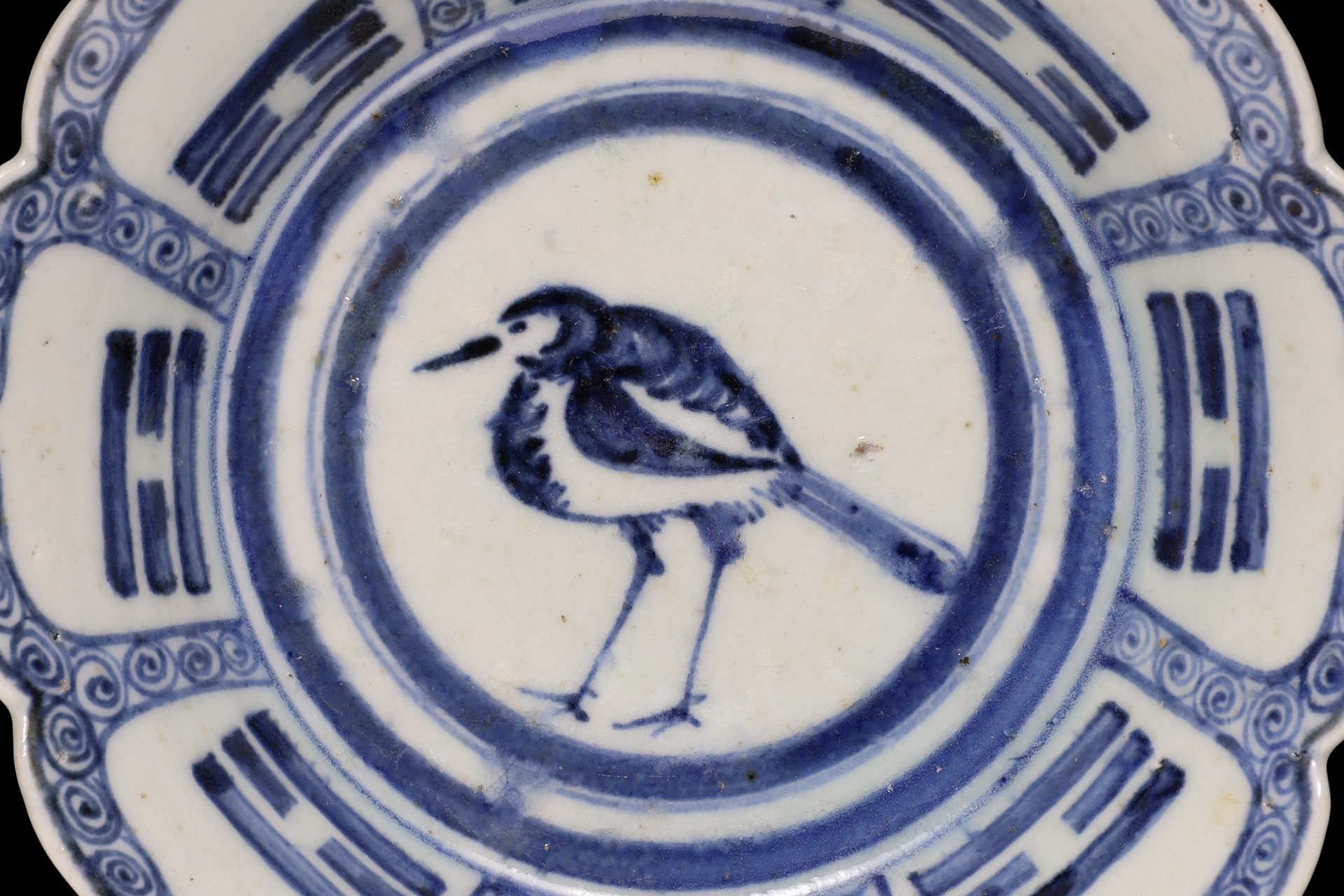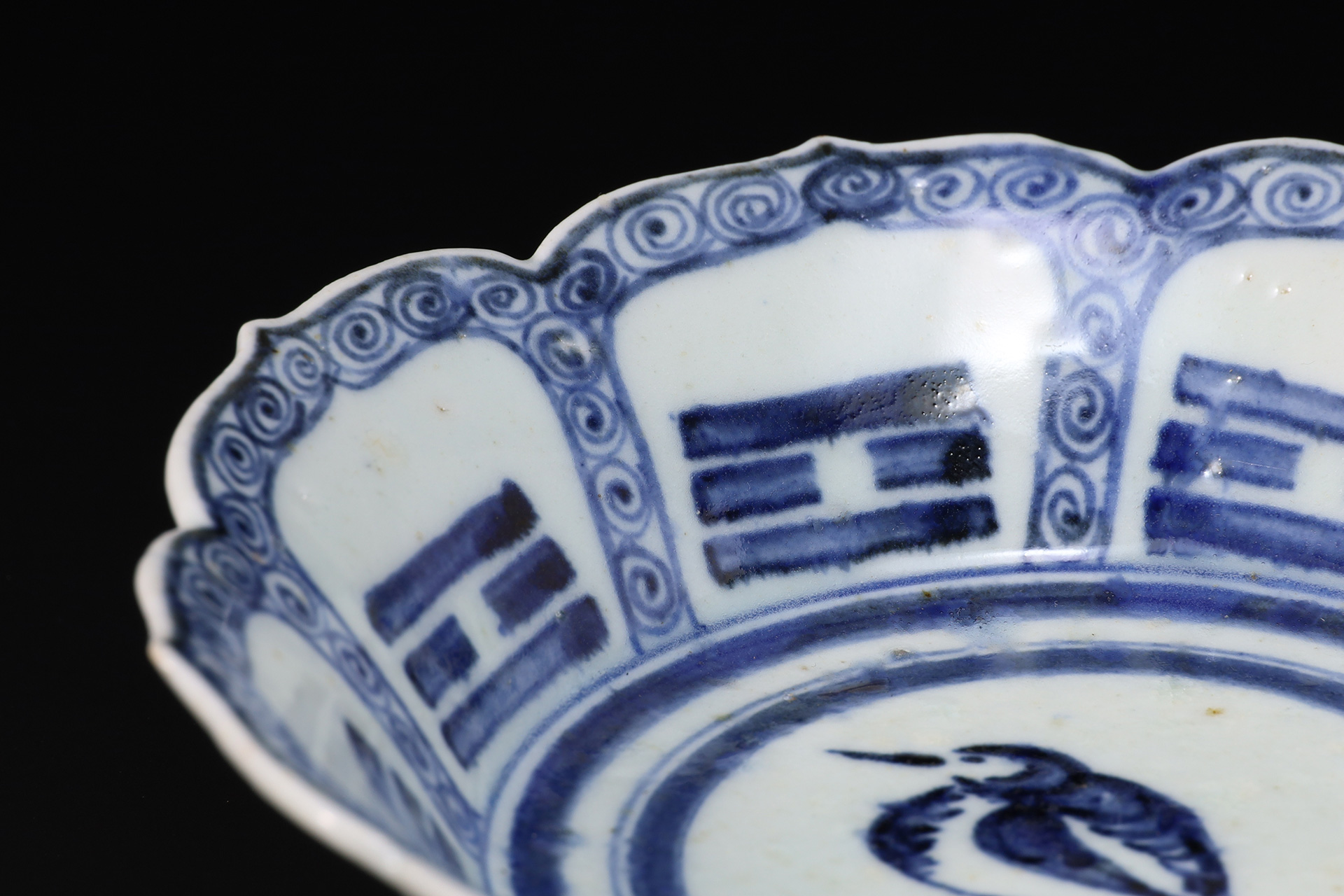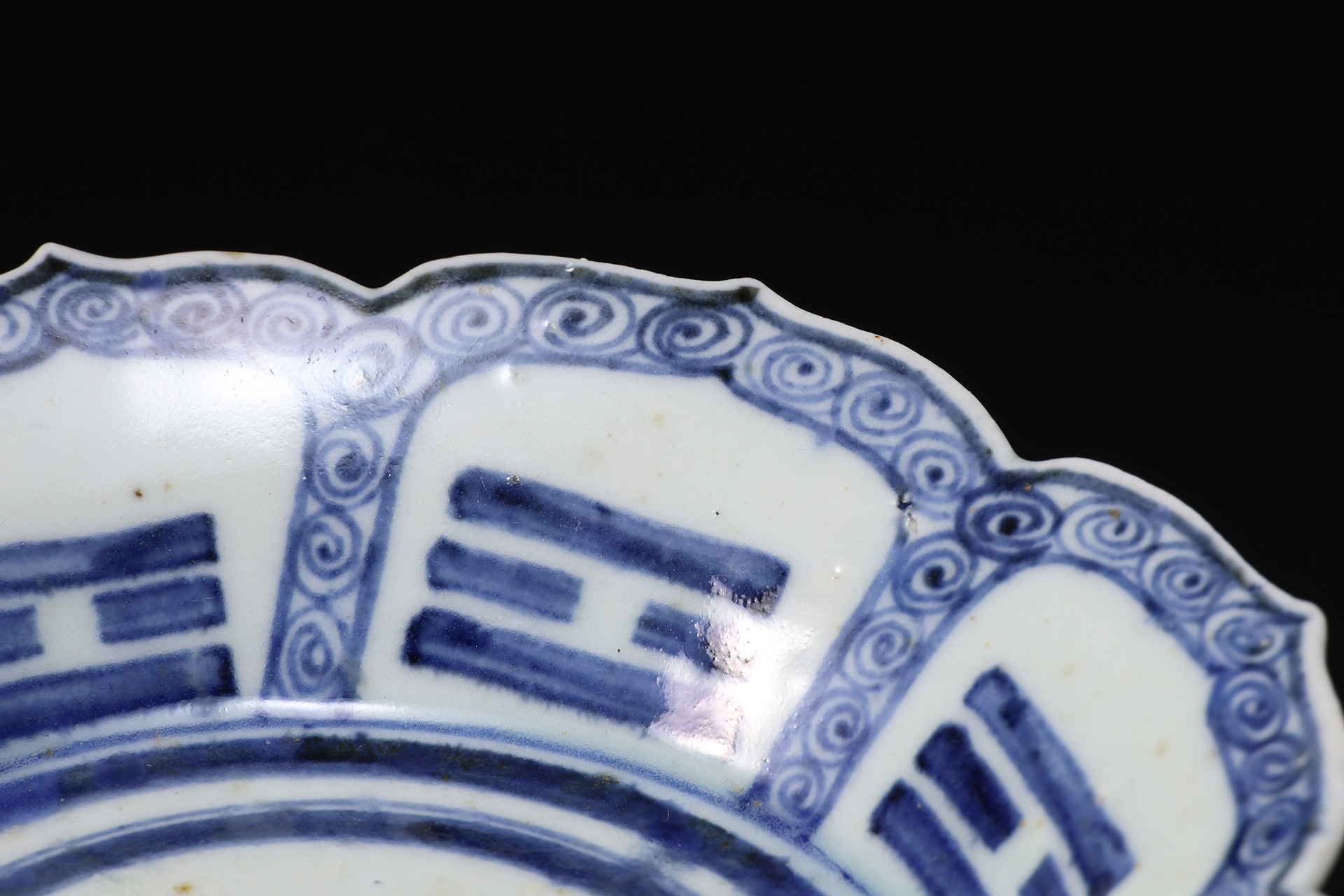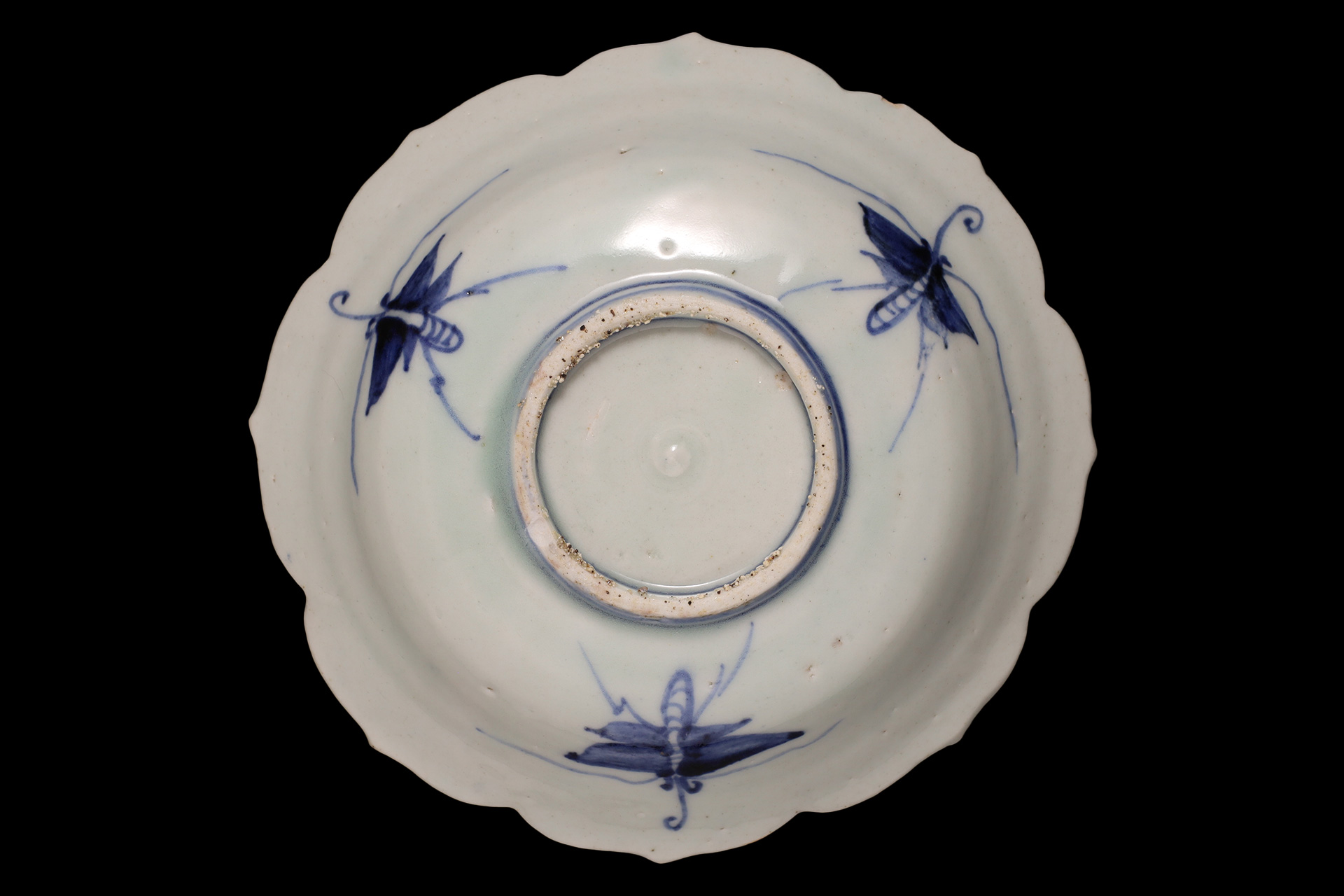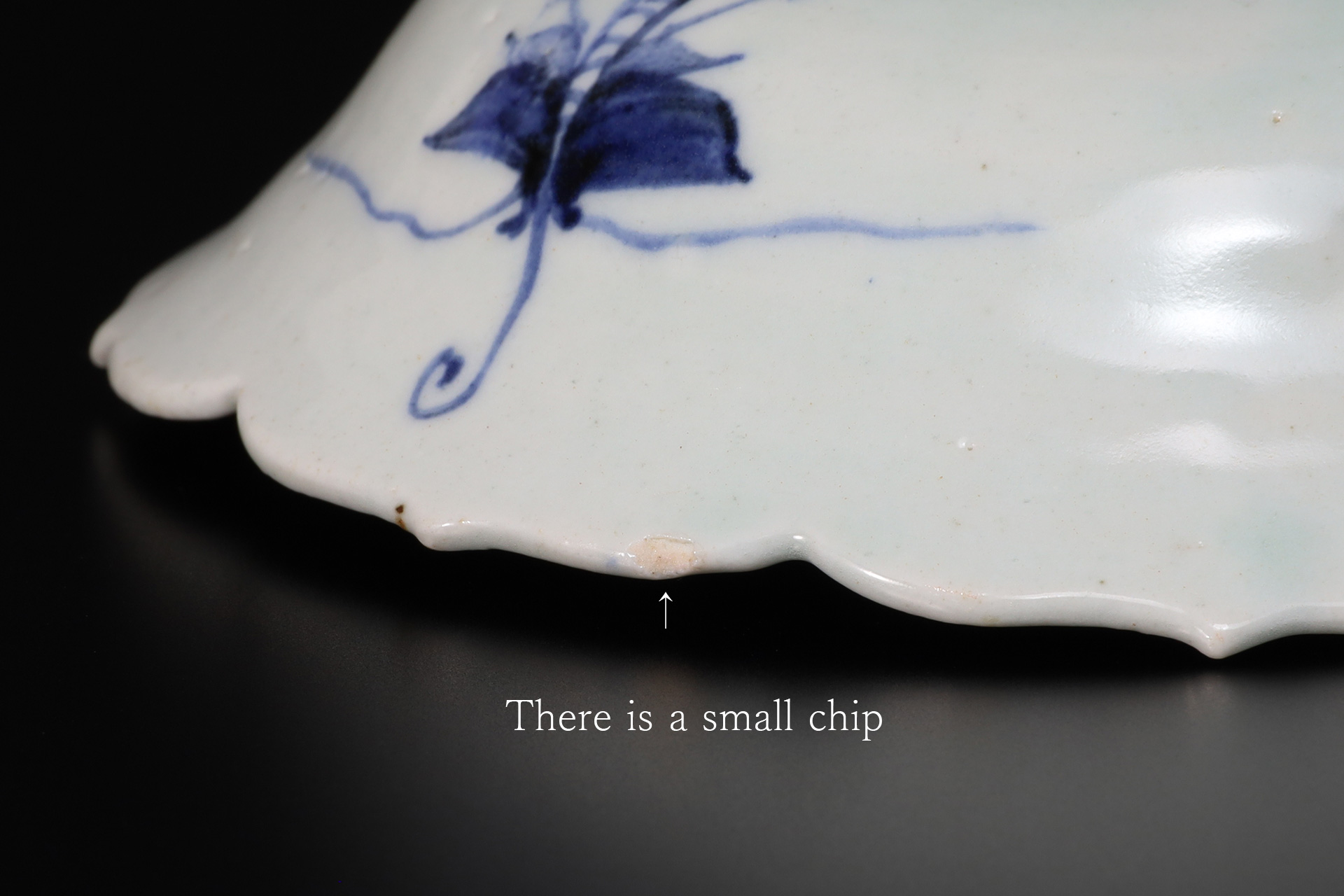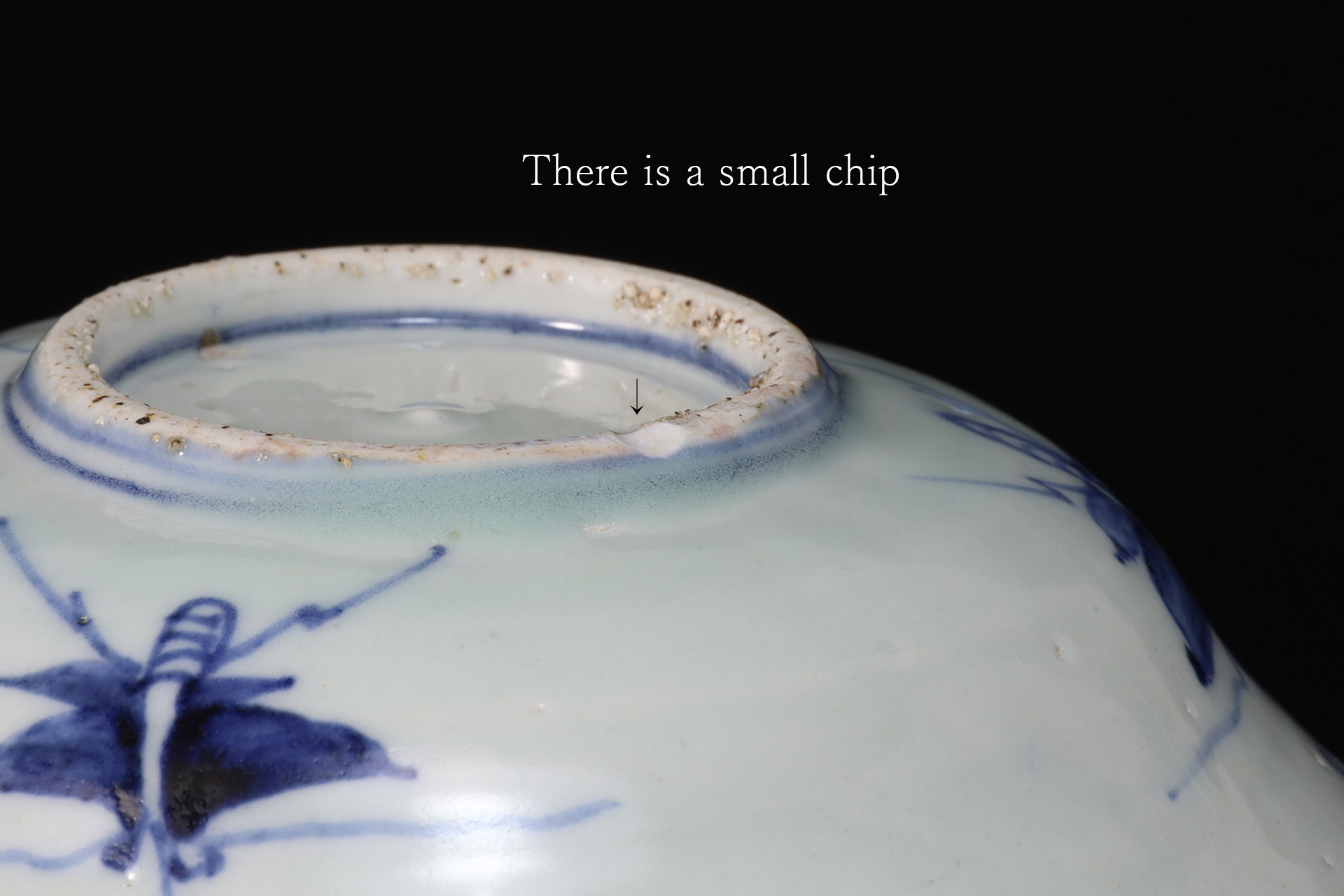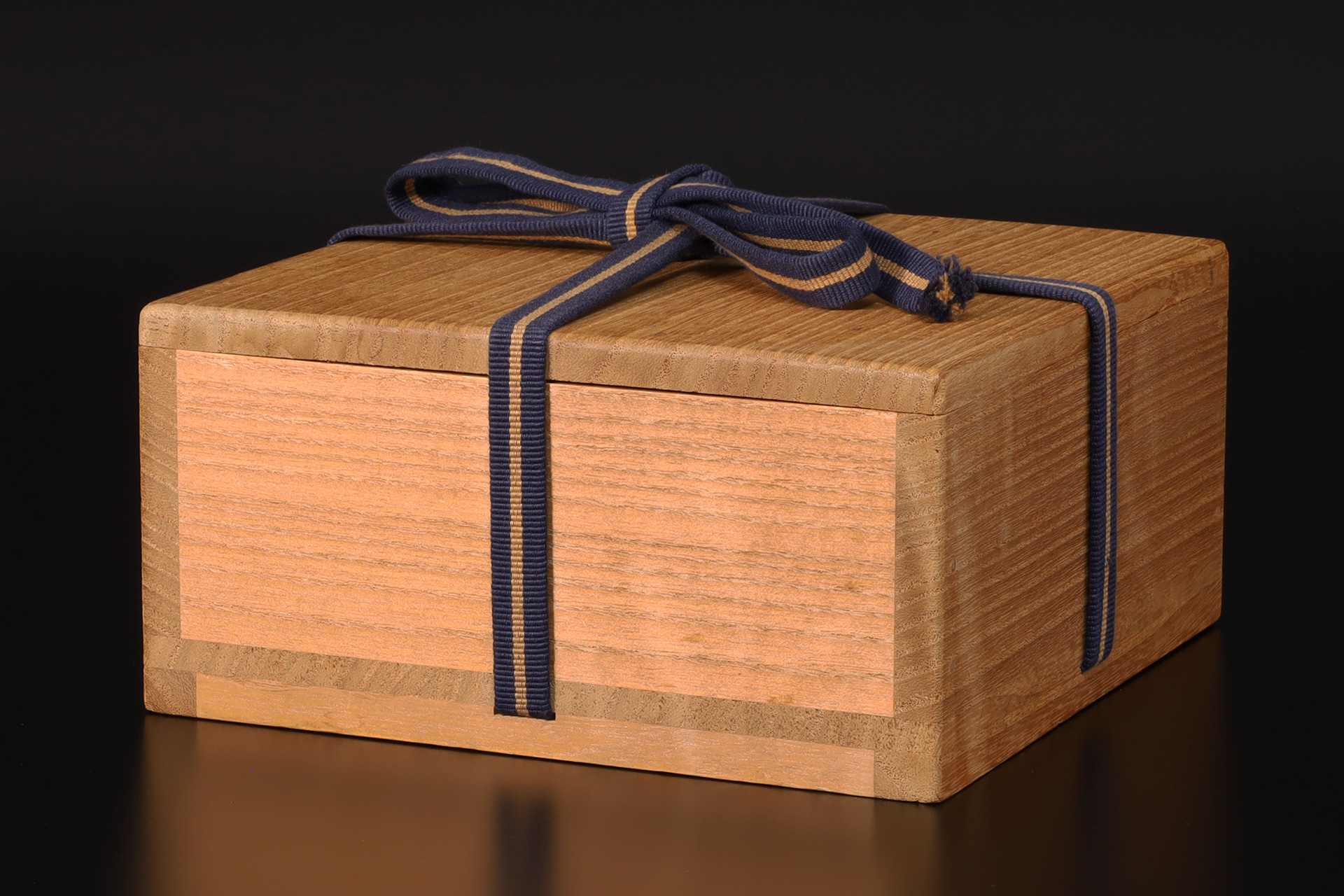This is the excellent work of early imari with a bird design. It is thought to have been produced at the kamanotsuji kiln, and works with a similar composition and a white heron design on the inside have also been confirmed.
Inquiry
- Product Code
- 250712-2
- Period
- Edo Period
Early 17th century
- Weight
- 184g
- Diameter
- 14.7cm
- Height
- 4.0cm
- Bottom Diameter
- 5.4cm
- Description
- Paulownia Box
- Condition
- There is a chip at the edge and bottom
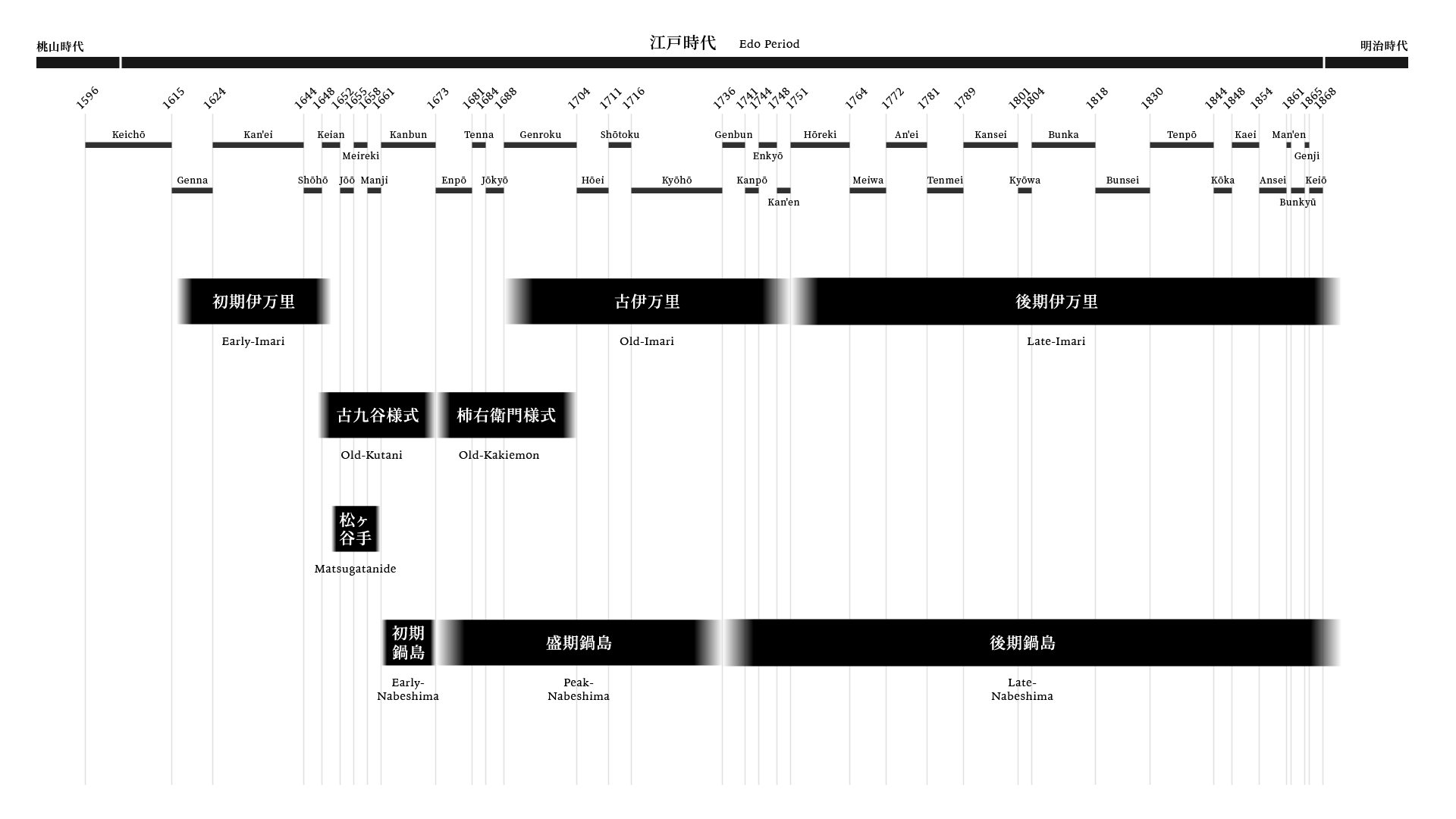
Early-Imari
Early imari are the first japanese porcelain wares, thought to have emerged in 1616. Until the middle 17th century, potters used “Single Fire Glazing”, where bisque firing at 900℃ is skipped, and instead it is glaze fired at a high temperature of 1,300℃ right after shaping the clay. After bisque firing was incorporated in the late 17th century, deformations and cracks during the firing process became less frequent. As heat resistant containers called saggar that protect wares that are being fired in the kiln were still not being used, some wares have ash, iron, and other residual particles inside the kiln attached to them. Additionally, coarse sand was laid on the bottom of the kiln to prevent the wares from sticking to it. As such, many of the wares have coarse sand attached to the foot ring at the bottom of the wares. Porcelain making such as these were led by korean potters brought to japan, but enamel decorations were inspired by china’s jingdezhen porcelain during the latter part of the ming dynasty, and in the beginning, japanese potters repeatedly conducted trial and error to come up with a unique japanese style. Very few types of early imari have been found with inscriptions that denote the names of authors, firing kilns, and trademarks. Those that do have inscriptions were done by potters who simply copied the inscriptions on chinese porcelain and did not know how to write nor the meaning of the words, so many of them were incomprehensible and had mistakes or omissions. However, the simple yet profound enamel decorations by potters on their wares are one of the greatest charms of early imari. While the techniques that went into them were still rough on the edges, they portray a sense of innocence and boldness that is not seen in perfected imari ware. “Beauty in Imperfection” is therefore the greatest charm of early imari, which embodies a unique warmth and mildness expressed through the glaze, similar to yi dynasty Porcelain.
